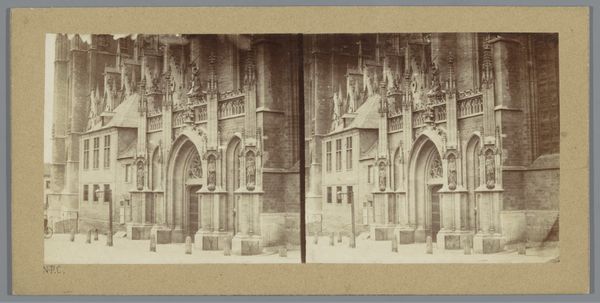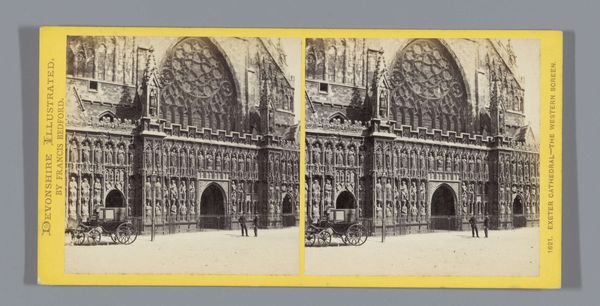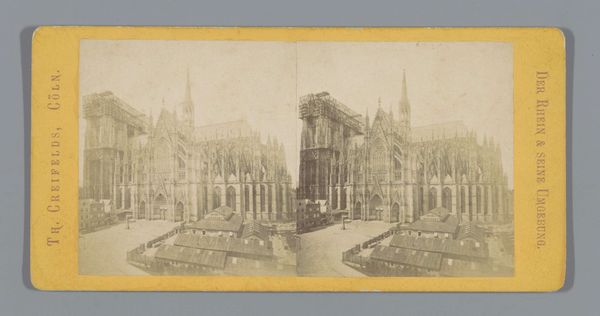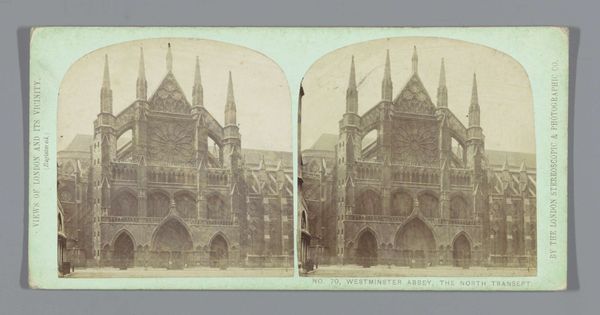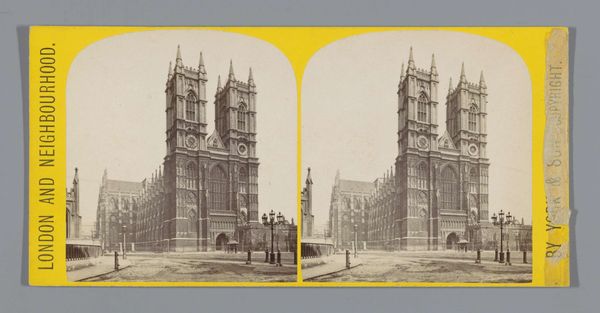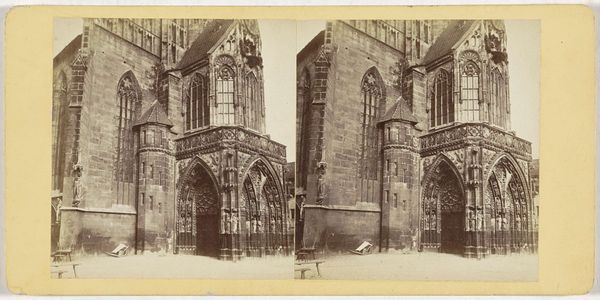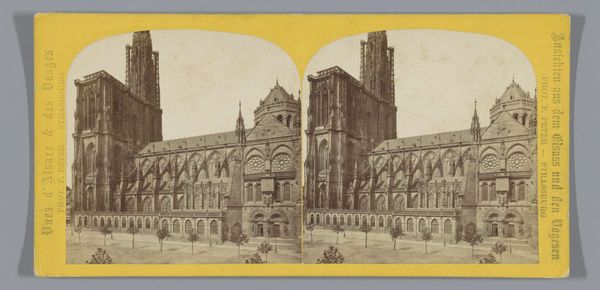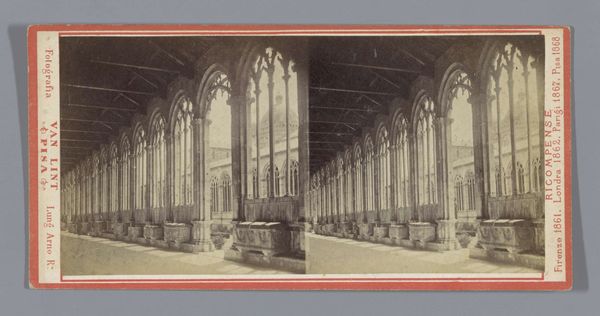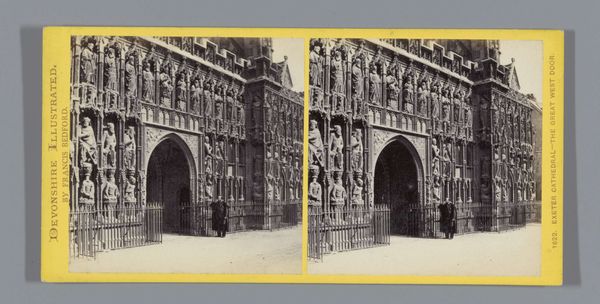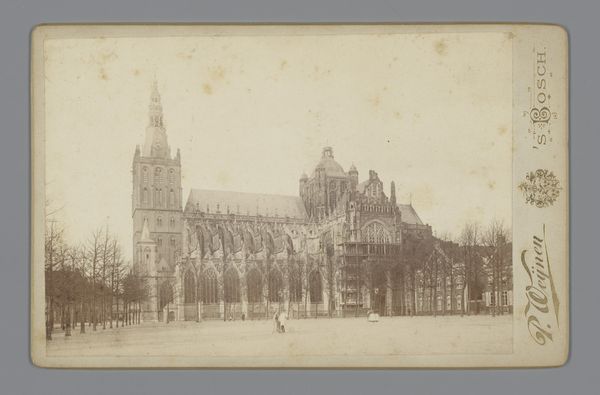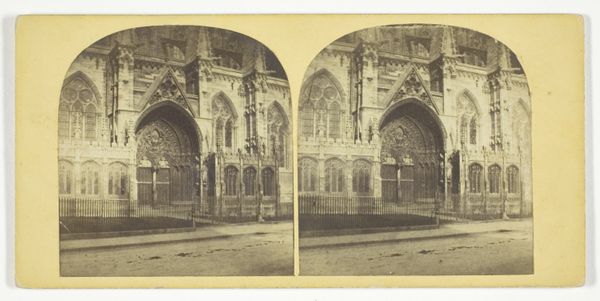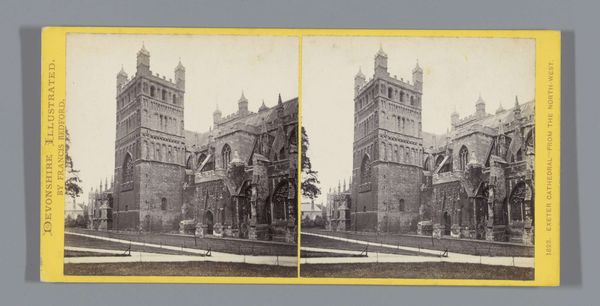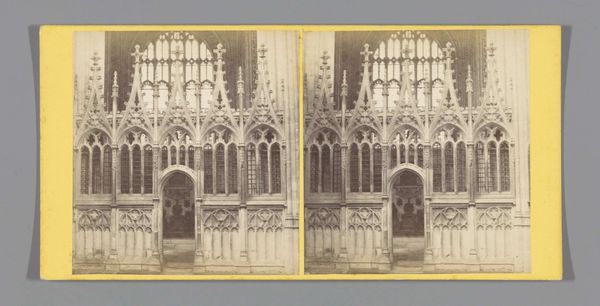
photography, gelatin-silver-print, architecture
#
photography
#
gelatin-silver-print
#
cityscape
#
architecture
Dimensions: height 85 mm, width 170 mm
Copyright: Rijks Museum: Open Domain
Editor: Here we have Valentine Blanchard’s photograph, “Part of the exterior of the Palace of Westminster,” likely captured sometime between 1850 and 1880, printed using the gelatin silver process. It feels so grand, yet almost…distant? What stands out to you in this work? Curator: The grandeur is absolutely tied to the means of production and the social context. Think about what went into constructing that building, the sheer volume of materials—stone, glass, metal. And consider Blanchard’s role; capturing this edifice through photography meant navigating both the technical challenges of the process and the societal importance of documenting such a symbol of power. The photograph flattens it into something reproducible, consumable. Editor: So, the act of photographing it changes its meaning? Curator: Precisely. It shifts the building from a purely physical, functional space to a commodity, an image readily available for consumption. The gelatin-silver print itself speaks to that: a mass-producible object enabling widespread dissemination of the image. Were these stereographs sold or commissioned? Thinking about the audience is essential. Editor: That’s fascinating. I hadn't considered the materials and dissemination as part of the statement the photograph is making. So, looking at the production… the labour needed… How would you interpret that labour, now viewed through our lens of contemporary awareness of historical exploitations? Curator: We must recognize that materials like the silver for the print likely involved exploitative labour practices, from mining to manufacturing. The photographic process itself, though seemingly straightforward, rested upon complex industrial supply chains. The photograph’s subject – the Palace of Westminster – represents governance and power, but the object of the photograph, and indeed the architecture depicted, conceals other, less palatable realities about its origins. Editor: Wow. I will never see photographs the same way. Curator: That's the point! It is crucial to see beyond the surface and delve into the layers of material production and social context to truly understand any artwork.
Comments
No comments
Be the first to comment and join the conversation on the ultimate creative platform.
